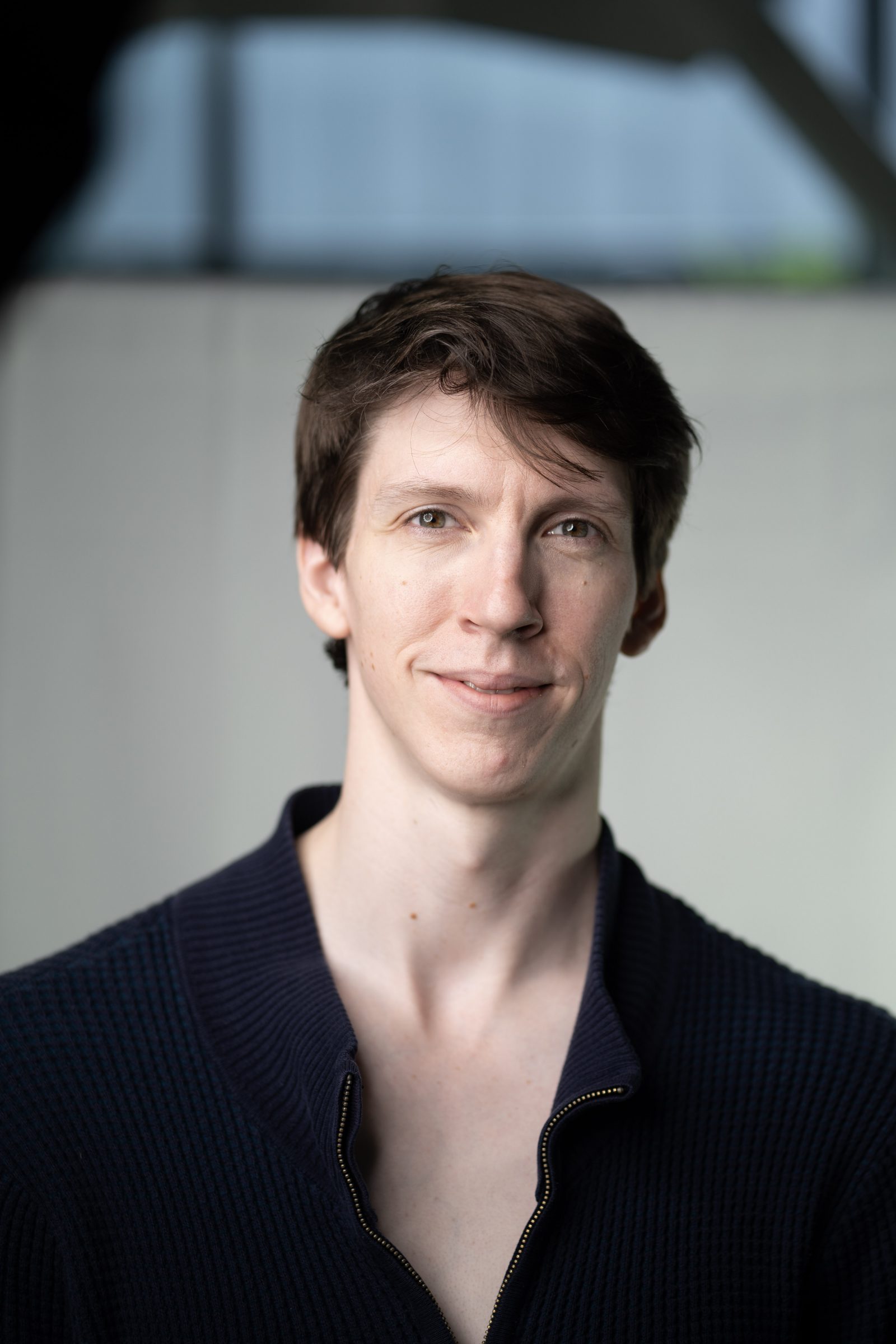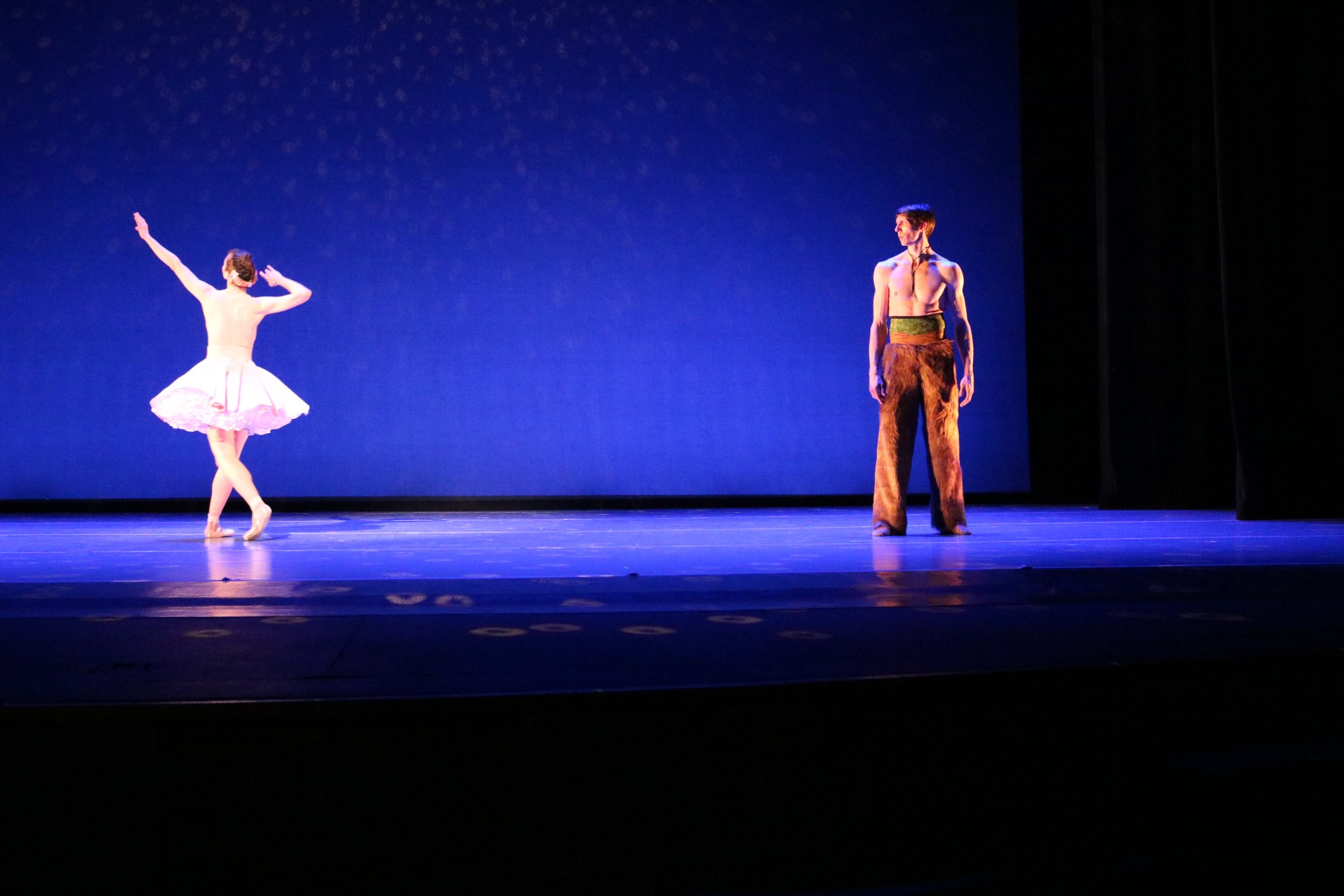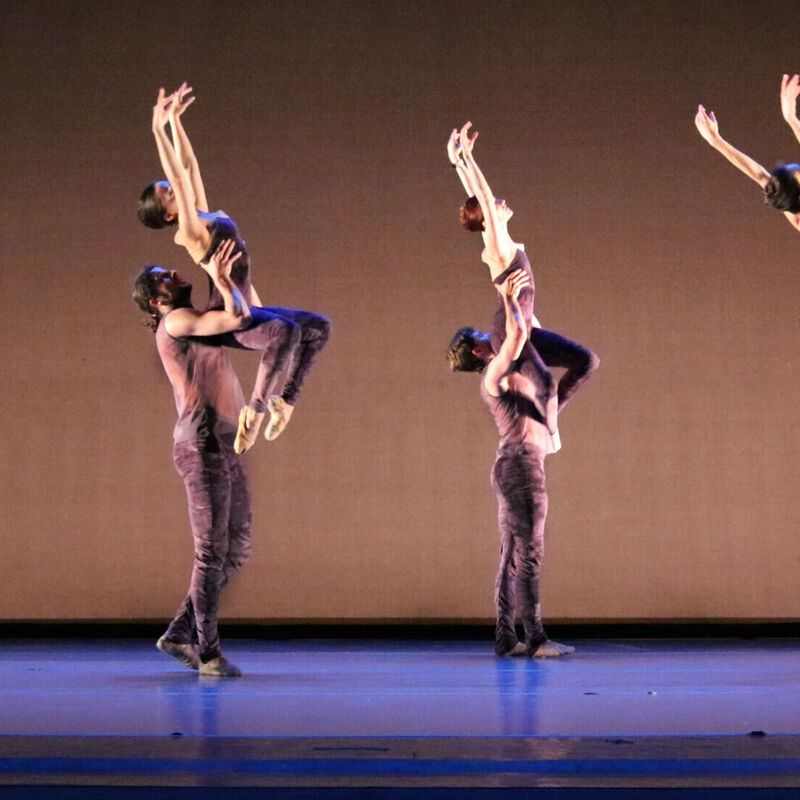CAPTCHA Captures the Imagination by Michael Donahue
Choreographer and Company Artist Brandon Ramey Interviewed for the Memphis Flyer
I’m proud to say I was part of the inspiration for Brandon Ramey’s CAPTCHA, one of three ballets featured in Ballet Memphis’s “Winter Mix” program.
And, I might add, helping to inspire a ballet is a first for me.
“Well, if you’re a fan of gonzo journalism, it starts with you,” says Ramey, 32, a dancer in the Ballet Memphis company and assistant director of the school. “I saw a picture you had posted on your Facebook timeline. It looked like a painting of you eating a doughnut. And someone had commented, ‘Beautiful painting, Michael. Who’s the artist?’ And you told him it’s actually a photograph that someone used in the book, The Donut Shop That Never Sleeps. And that it was turned into a painting by an iPhone app.”
 Michael Donahue in The Donut Shop That Never Sleeps. (Credit: Britton DeWeese)
Michael Donahue in The Donut Shop That Never Sleeps. (Credit: Britton DeWeese)
That was the photo the book’s author, Britton DeWeese, took of me at Gibson’s Donuts, where he is manager/owner.
“That gave me the idea,” Ramey says. “I’m not a painter, but I consider myself an artist. So, I was shocked to see how easily I was fooled. I also thought it was an artist’s painting of you eating a doughnut.
“It kind of got the wheels turning. I started thinking, ‘What else can these computer algorithms achieve?’ They can control who we see and what we see on social media, but they also make paintings. And I also discovered there are computer algorithms that can generate music.”
Ramey bought the book. “I actually went and got a copy of the book after seeing your Facebook post on it,” he says. “My daughter loves it. She loves doughnuts.”
 Brandon Ramey (Credit: Ballet Memphis)
Brandon Ramey (Credit: Ballet Memphis)
Beyond local doughnut literature, Ramey began reading about David Cope. “He’s a former professor of music at the University of California at Santa Cruz. He developed a computer program that he named ‘Emily Howell.’ At first when I saw it, I was totally freaked out but intrigued. It sounds like something straight out of a science-fiction movie.
“Emily Howell has a huge library of classical compositions in which she analyzed sound patterns and styles. So, she can compose new music in the style of, say, Bach or Beethoven or the style of Rachmaninoff based on patterns or styles she has analyzed through sheet music.”
Inspired by that process, Ramey constructed a ballet based on a statement made by Alan Turing, “the founding father of the computer process. He always said the benchmark for determining whether computers had human intelligence was whether or not they could fool you into thinking they were a real person in a text-based conversation.”
Ramey decided to do the same thing, but with classical music. “The structure of this piece is a Turing test for the audience in which I play music by Bach or Franz Liszt,” he says, “and I play this computer-generated music. The audience has to decide which is which.”
He paired Cope’s Emily Howell computer-programmed musical pieces with “real-life compositions” by classical composers.
CAPTCHA features four pieces of music in one 16-minute dance. Each section includes one computer-generated piece and one authentic piece. “I introduce the premise and the rules of the piece through the character of Emily,” he explains. “Inviting them to take part in the test and challenging them to see if they can tell the computer forgeries from the real thing — the authentic human compositions.”
CAPTCHA is an acronym for “Completely Automated Public Turing Test to Tell Computers and Humans Apart,” making it the perfect title for Ramey’s musical Turing Test.
Audience members don’t have to fill out forms during the production. This isn’t a written test, Ramey says. “We don’t check people’s work.”
But he meets audience members in the lobby after the ballet to see how they did. “Some people are completely right and some are a bit fooled. They’re not sure which is which,” he says.
And, Ramey says, “If you want to know, you can look in the program. There is a cheat sheet in there.”
However, he really wants audience members to “figure it out themselves. As an artist, I’m really rooting for the audience to tell which compositions are human. If we can’t tell, how long before we switch out the human composer for computers? Or how long before we can replace the choreographers or even the dancers?”
The Boston Dynamics robotic company has a “hilarious algorithm of a really creepy rendering of ‘Do You Love Me.’ These robots are surprisingly good dancers.”
CAPTCHA features eight dancers. “The costumes are a form-fitting purple unitard. I wanted to accentuate the shape of a human being. At one point in the choreography I try to create the picture of the Vitruvian Man from the da Vinci drawing. The naked guy with his arms out to his side in the inside of a circle.
“The men have on sort of a see-through mesh mock turtle neck. The costumes were designed by Christine Darch. The women are in a purple unitard, which has heart-shaped cutouts at various points of the body. Just to evoke how the hearts, the shape of a heart, have been appropriated for social media.”
Hearts are used as a symbol for, “Oh, I like that,” on Facebook and Instagram, Ramey says. He wants to “put hearts back where they belong as being more human symbols as opposed to a computer social media symbol.”
Ramey isn’t in CAPTCHA, but he dances in George Balanchine’s Concerto Barocco, another piece in “Winter Mix,” with his wife, veteran dancer and assistant director at the school, Virginia Pilgrim Ramey.
 Virginia Pilgrim Ramey and Brandon Ramey in “Concerto Barocco.” (Credit: Ballet Memphis)
Virginia Pilgrim Ramey and Brandon Ramey in “Concerto Barocco.” (Credit: Ballet Memphis)
His wife isn’t in CAPTCHA. “I wish she was in it. She’s in Trey McIntyre’s piece, Patsy Cline Gets Her Heart Broken.”
Ramey, who has been with Ballet Memphis since 2009, says CAPTCHA is his first main stage choreography with the company. “I’ve choreographed a number of works with the school and a dance film, Overview Effect, which debuted in 2021,” he says. “My attempt to take the audience to space and let everyone see how small and fragile our pale blue dot of an Earth is. And how we should take better care of each other since we’re all sharing this tiny grain of sand in this enormous cosmos.”
As for CAPTCHA, Ramey says, “Audience reaction has been great. I won’t tell you how it ends, but Anwen Brown, one of the last dancers on stage, said her favorite part is listening to the audience gasp right as it ends.”
You can link to the original story on the Memphis Flyer website here, and many thanks to Michael Donahue for being an inspiration as well as interviewing Brandon about his incredible new work.




